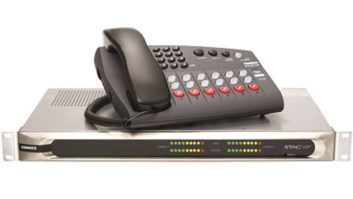DTMF Information and Examples
Jun 8, 2003 12:00 PM
In the early 1960s, AT&T introduced a method of providing in-band signaling so telephone customers could place telephone calls. The system was called dual-tone multi-frequency, or DTMF. AT&T, through its Bell divisions, marketed the technology under the name Touch-Tone.
The DTMF system uses eight different frequency signals transmitted in pairs to represent sixteen different numbers, symbols and letters. The table below shows how the frequencies are organized. These frequencies were chosen to prevent harmonics from being incorrectly detected by the receiver as other DTMF frequencies.
The frequencies along the top are referred to as the High Group. The frequencies along the left column are called the Low Group. By transmitting one frequency from each group, a corresponding DTMF is created.
ANSI standards state that DTMF tones used in telephony must meet the following criteria:
- The DTMF duration must be at least 50ms.
- The inter-digit interval (silence) between tones must be at least 45ms.
- The receiver should receive the DTMF digits with a signal strength of at least -25dBm and no more than 0dBm.
- The energy strength of the high-group frequency must be -8 dB to +4 dB relative to the energy strength of the low-group frequency as measured at the receiver.
When the level between the two frequencies is not equal it is said to have a twist. Most modern equipment is fairly tolerant of unbalanced levels between tones.
The buttons below are hyperlinked to WAV files of their corresponding Touch-Tones.
1209Hz
1336Hz
1477Hz
1633Hz
697Hz
770Hz
852Hz
941Hz
















Audio samples created by Carla Kay Barlow.












